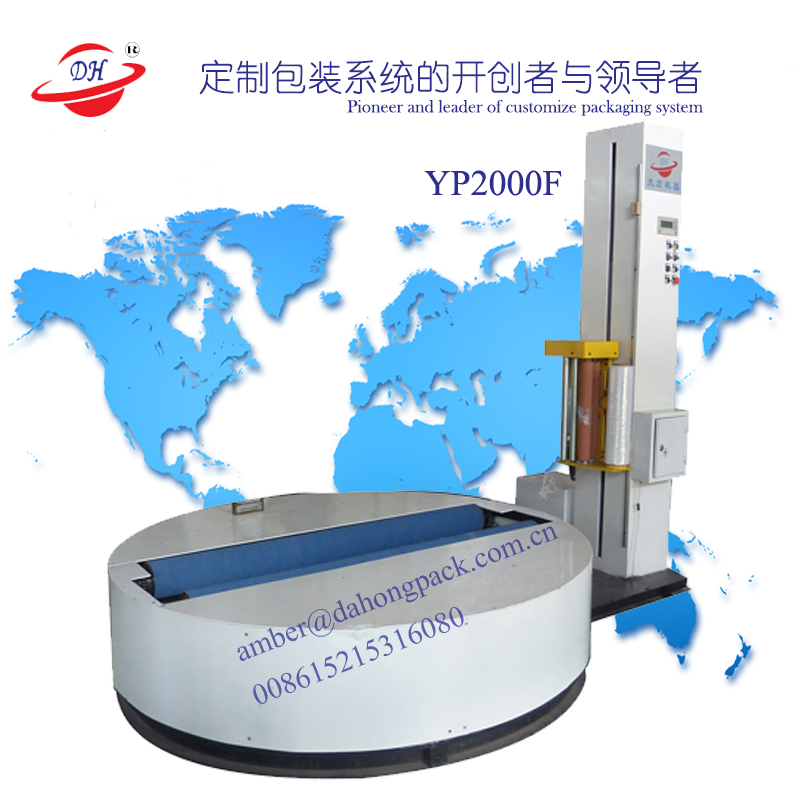8. Organic Separation Membrane In view of the world's lack of industrial industrial water, the first developed cellulose acetate membrane was first used as a permeable membrane to absorb dyed water. It is also used today for the separation of various industrial wastewaters and food processing industries. High-performance separation membranes are one of the industrial basic technical topics in the 21st century, so the future development trend is to improve the performance of separation membranes, and to study the separation of water and alcohols, separation of hydrogen, separation of chlorine, separation of hydrocarbons, and the like. In addition to oxygen-enriched membranes, the research progress of a high-molecular compound immunoadsorption separation body for the treatment of blood electrostatics and pathogens is also very good. Separation membranes and separation technologies occupy a very important position in the production of food, beverage processing, and space water, mineral water, and beverage water distribution, and are widely used.
9. Biopolymer materials Biopolymer materials have entered the experimental stage, such as artificial blood vessels, artificial heart, artificial valves, artificial lungs, artificial warts, artificial bones and so on. The application of bio-polymer materials in packaging is expanding day by day. Microbial (bacterial) plastics, bio-degradable plastics, and bio-optically solvable plastics are all hot topics in the packaging world today.
10. Organic optoelectronic materials Photoelectron organic polymer materials newly developed varieties are: organic photochromic polymer materials, nonlinear optical materials, photorefractive materials, polarizing polymer materials, selective light-transmitting polymer materials, photoelectric conversion functional materials, piezoelectric Functional polymer materials and so on. Non-linear optical polymers (NLOs), gradient-index polymers (such as methyl phenylenoates, vinyl benzoates, etc.) have also made considerable progress. Therefore, organic optoelectronic materials have great potential for application in special packaging.
11. The resin-based composite material has a wide variety of polymer composite materials in which a variety of fibers, granules or films are compounded using a resin as a matrix. For example, conductive fibers are compounded into conductive functional materials, wave absorbing functional materials, ceramics, glass fibers and carbon fiber composite reinforced plastics, or different resin films and multilayered composite materials, etc., and their application fields are very wide; There are more than 30 types of fibers commonly used. In the packaging has been widely used mainly laminated composite, coextrusion composite, mixed and reused types of composite materials.
The development trend of resin-based composite materials: First, to improve the composite process, improve the performance and function of composite materials; Second, select the appropriate materials and the best process to reduce the cost of composite materials; Third, research and development and new varieties, such as the structure is being developed Materials, functional materials, molecular composites, ecological composites, etc.
12. Metal Matrix Composites These composites have relatively high strength, high modulus, good high temperature parts, and good electrical and thermal conductivity. They are particularly suitable for aerospace and other industrial sectors. Metal matrix composite technology is fast and there are many methods. Therefore, the main metals used for the composite are Ti, Ni, Cu, Pb, and Ag, and particularly light metal Al, Mg, Ti, and the like. Composite materials include metals, non-metals, and other compounds.
The market and development trend of metal matrix composite materials are arranged in the order of aluminum matrix, magnesium matrix and titanium matrix, but the growth rate is opposite. The most widely used industrial packaging materials are aluminum matrix composites and new titanium matrix composites.
13. Ceramic matrix composites Ceramic matrix composites mainly include: ceramics - metals, ceramics - ceramics, ceramics - polymers and their multilayer composites. Foreign research focuses on composite materials such as high-temperature superconducting ceramics, piezoelectric ceramic polymer composites, nano-ceramic composites, high-performance nano-dehydrated composites, ultra-high temperature ceramic composites, and biodegradable ceramic materials. Preparation techniques such as direct oxidation process, Sol-gel process, chemical vapor infiltration (CVI) technology, etc. The main applications of packaging are traditional ceramic composite materials, and biodegradable ceramic materials also have certain prospects.
14. Surface modification materials There are a wide variety of modern modification materials, including metallic, non-metallic, ceramic, plastic, and multi-component composites. The surface modification of new materials used in the packaging industry is relatively more. For example, in order to improve the condensation performance of the packaging plastic film, vacuum vapor deposition (PVD) technology is used to "coat" a very thin layer of aluminum film on the plastic surface, and a silicon oxide film, etc.; the plastic film is processed by laser scanning; The chromate passivation technology is used to modify the surface of the electrolytic iron foil, strengthen the material properties, etc. And the second trend will continue.
15. The development of special paint coatings must adapt to the "green packaging" guidelines. Special coatings have developed rapidly in recent years. Typical of these are top coats represented by organic composite coatings. It indicates that the coating has changed from the final product coating to the raw material coating. Now it has antirust, conductivity, lubrication, primer, and resistance Fingerprint type and many other. In addition, paste paint, all-plastic paint, and self-swimming paint are ecological types. (Finish)
Shandong Dyehome Intelligent Equipment Co.,Ltd(Company NEEQ STOCK CODE:836635)
Fabric Roll Wrapping Machine Global Solution* Easy Handling FABRIC ROLL Penguin Stretch Wrapping Machine, Model: Fabric Roll is a universal machine. It is used for stretch wrapping the rolls like fabric rolls, denim rolls, carpets, films, paper rolls etc,. It spirally wraps the long rolls using 500mm width Stretch Film. Complete moisture proof packing can be achieved by suitable end caps. Machine can be supplied to wrap rolls up Salient Features: # Retum-of-investment is only a few months # Outstanding efficiency and * Saves 95% of electrical energy compared to shrink wrapping * Powered pre-stretch upto 300% stretch Applications: Fabric rolls. Grey cloth. Denim rolls, Carpets, Curtain cloths, film, paper. PProlls, etc..

YP Series Reel Wrapping Machine
Yp Series Reel Wrapping Machine,Reel Wrapping Machine,Stretch Film Reel Wrapping Machine,Automatic Reel Wrapping Machine
Shandong Dyehome Intelligent Equipment Co., Ltd. , http://www.dyehomepack.com
![<?echo $_SERVER['SERVER_NAME'];?>](/template/twentyseventeen/skin/images/header.jpg)